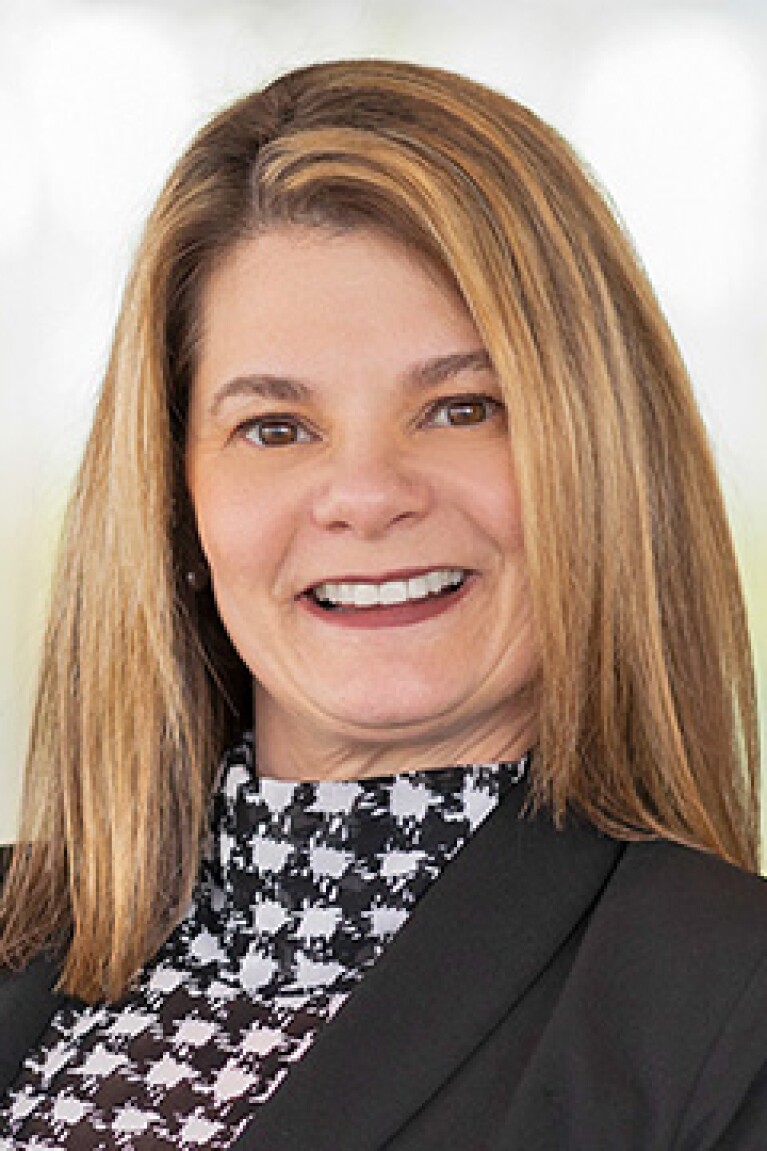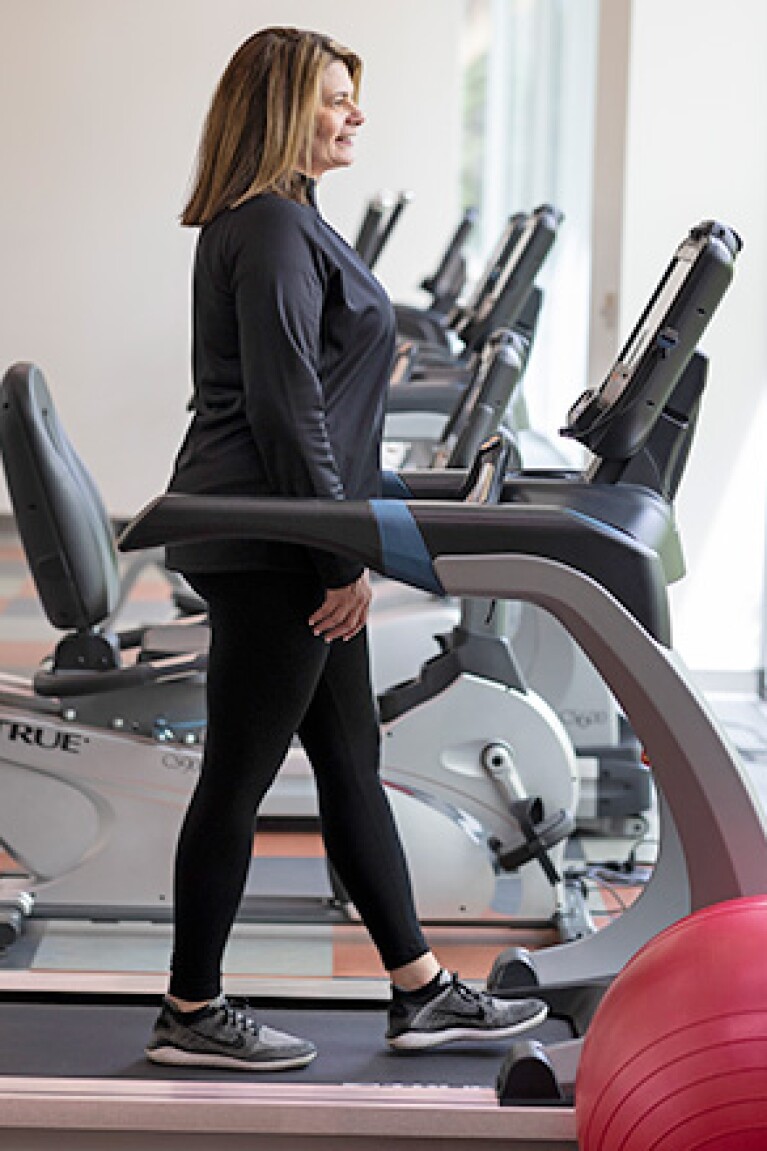Imagine a day in the life of a nurse and you might picture someone who spends that day at a patient’s bedside, providing the hands-on care that is vital to getting people well.
And indeed, a 2018 study in the American Journal of Medicine found that patients in the intensive care unit (ICU) recalled spending 86% of daylight hours with nurses versus 13% with physicians—even though the actual numbers are closer to 33% and 15%, respectively. That close patient contact that nurses are known for is part of why nursing has ranked as the most trusted profession for 21 years in a row, according to a recent Gallup poll.
It’s also what compelled Betty Jo Rocchio to become a nurse 32 years ago. But tending to patients is just one part of her job.
“Like in other professions, nursing has gone from a small world where we kept track of patients using paper charts and pencils to being part of the digital ecosystem,” says Rocchio, DNP, MS, RN, CRNA, CENP, EBP-C, Senior Vice President and Chief Nursing Officer at Mercy, a multistate health system based in St. Louis, Missouri.
Whether she is working in the operating room (OR) as a nurse anesthetist, making rounds with nursing teams to find out what staffers need most, coming up with game-changing ideas to help solve the nation’s nursing shortage or crunching numbers as a hospital administrator, she is all about creating a culture where nurses—and patients—can thrive.
Even in the early days of Rocchio’s career, when she spent the bulk of her workday in the ICU, OR and in labor and delivery, she had an eye on the future. “The best piece of career advice I ever got was from my mother, who was also an OR nurse,” says Rocchio. “She told me that it wasn’t enough for me to get a nursing degree; she said I also needed to get a business degree, so I would be prepared for where nursing was heading.”
That dual degree came in handy, as Rocchio is now in charge of nursing at more than 40 Mercy hospitals across four states. “I have 12,000 nurses reporting up through me,” she says. That means her days are spent zipping between her family home in Columbus, Ohio, corporate headquarters in St. Louis and hospitals throughout Arkansas, Kansas, Missouri and Oklahoma. All that, and Rocchio still manages to carve out plenty of family time with husband Andy Conkle (a cardiothoracic physician assistant) and their three kids, while remaining true to her nursing roots.
“I still work in the OR twice a month,” Rocchio says. “I love surgery—if I have a challenging day at the leadership level, I can take care of patients and feel better.” And while she seems to do more in a typical workweek than most people do in a month, she has managed to build a life she loves—which is what she wants for all nurses. “What nurses care about most is coming into work, providing great patient care and being able to leave with enough energy for themselves and their families.”
Here’s how Rocchio does just that in a typical day.
5 AM Lace up and hit the track
“I ran cross-country and track in high school, and I still run for 25 to 45 minutes early in the morning, five days a week. For me, exercise brings mental clarity. I shut my phone off, focus on my breathing and get into the zone. It’s when I do some of my best thinking about life and the things that affect me as a woman, as a mother and as a nurse.”
6 AM Shower and a quick breakfast
“I’m a coffee snob. I have a fancy barista machine and I grind my own beans from a local coffee company started by some college kids in Columbus. I even bring a bag with me to St. Louis, where I have a second home. Wherever I am, I start the day with a cup of coffee and an egg while I look over my calendar and go through my emails.”
8 AM Head to the airport
“I’m usually on the road Monday through Thursday—virtually every Monday morning I’m on a 9 AM flight from Columbus to St. Louis—then I’ll work from home on Fridays so I can have a full weekend with my husband and kids, who are 16, 18 and 20. I try not to do anything on weekends that isn’t related to family.”
9 AM Not-so-light reading
“The flight to St. Louis is only an hour. And because of the time change, I gain an hour when I arrive, so I’m there by 9:10, which is great. The flight is my uninterrupted time to catch up on my reading—usually medical journals.”
9:30-11:30 AM On the front lines
“On Mondays and Tuesdays, I’m at Mercy’s corporate office, having meetings and talking strategy. On the other two days, I’ll travel to one of our hospitals and stay for the day. Twice a month, I start those hospital visits with a Mercy-wide meeting, where I’m in the room with the local nurse leadership team and, simultaneously, on video conference with every chief nursing officer across the entire Mercy system.
“We’ll tackle everything from nursing-practice issues, quality, safety and operations, including whether we have enough nurses to do what we have to do and what our nurse retention rate looks like. Then I’ll sit with the nurse leadership team, going through what’s affecting them, to figure out how I can serve them better. Something we talk about a lot lately: how to be more competitive in terms of recruiting. There was a major nursing shortage before COVID-19, and that’s gotten even worse since the pandemic.”
Noon Working lunch
“Lunch—usually catered and at the hospital—is my time to sit down with the local Mercy team and learn what’s going on in their lives. Typically, they’ll come with an agenda and we talk about what’s important to them—what they’re proud of, what’s working, what isn’t. This kind of in-person time is sacred. Sitting in an office away from nursing teams, you sometimes lack the perspective.
“Plus, the one-on-one contact is where I get ideas from the front lines—for instance, it’s where I got the idea for Mercy Works on Demand, the gig nursing platform a team and I developed to create more flexible working conditions for nurses. During COVID-19, the extra staff we were bringing in from agencies was doing a fantastic job, which got us thinking: If we could successfully bring in agency nurses to care for critically ill patients during a pandemic, surely we can do it other times, too. With Mercy Works on Demand, staff nurses can pull out their phones and, with the click of an app, choose their preferred shifts, then flex co-workers fill in the gaps. Less attractive shifts, like overnight hours, pay at a higher rate to attract gig workers.”
1-4 PM Making the rounds
“I spend afternoons ‘rounding’ with my whole team, nurses as well as business people. We all go out on the floor and make our way through the different units in the hospital, focusing on whatever the nurse manager of a particular unit wants to show us. We look at things not just through a nursing lens; we also focus on how we can get better at taking care of patients in a broader way. I’ll always ask to see each unit’s ‘huddle board,’ which includes all the important numbers, like the number of nurses or quality metrics such as infection rates caused by catheters and IV lines.
“I’ll also look at coworker engagement numbers. Besides sending out patient satisfaction surveys, we survey the nurses each quarter, asking if they feel supported in their roles. It’s really all about collaboration. The more supported and engaged nurses feel, the more satisfied patients feel.”
6-8 PM Dinner with the team
“When I’m traveling, I always let the nurse leader choose a favorite local spot for dinner. I love a good steak and salad. If I order dessert, I go for the crème brûlée.”
8:30-9:30 PM Connecting with the family
“When I’m away from home, I FaceTime with Andy and the kids in the morning and again at night. I’ve been traveling since the kids were tiny, so we have the routine down, but it’s important to maintain that connection. All three of my children live at home in Columbus—my son goes to college at Ohio State, so he’s also there. I still do his laundry on the weekends!”
10-10:30 PM Winding down before lights out
“Before turning in for the night, I may glance at email, but I try to keep it short because I want to be fully relaxed and in bed by 10. Usually, I’ll watch something mind-numbing—I love detective or action shows. Often, my husband and I will try to watch the same series, so we can talk about it when we’re together on weekends. Being apart can be hard, but I can’t imagine my life any other way. For me, the most gratifying part of my job is being around patients and the nurses who are doing the work, seeing their struggles and coming up with ideas to make their lives and work easier.”







